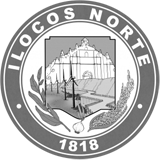During the mid-19th century, the Ilocanos have migrated in mass numbers out of their historical hometown to search for greener pastures in other regions in the Philippines. Most of these Ilocanos moved to more fertile lands in the Cagayan Valley, Central Luzon (which includes provinces Tarlac, Pangasinan, and Nueva Ecija), and to Metro Manila.
Others settled in the Cordilleras, Aurora, Mindoro, and Palawan. Later, the Ilocanos have found their way to Mindanao and settled in the frontier lands of the south particularly in the provinces of North and South Cotabato and Sultan Kudarat.
The primary reason for this mass migration of the Ilocanos is their search for a better living condition and more fruitful financial opportunities. The Ilocos Region (a.k.a Ilocandia) is located at the northwestern tip of Luzon. This is a harsh environment to live in. The Ilocos region is a narrow plain squeezed in between the barren Cordillera mountain rangers and the South China Sea.
Ilocanos are the first Filipino ethnic group to immigrate the United States. Inspired by the promise of a much better life, the Ilocanos started moving out of the country and into United States in 1906. The first wave of Ilocano migration to Hawaii was in 1906 to 1919. According to records, this migration is comprised of more than 29,800 Ilocanos, in which 24,406 were males, 3,056 were females and 2,338 were children. Most of the Ilocano migrants worked in sugarcane plantations along with the recruits from Germany, Scotland, Scandinavian, Russia, Spain, Portugal, China, Japan and Korea.
The second wave occurred in 1920 to 1929. This was the largest Filipino migration in Hawaii of about 73,996 Ilocano people. In 1930 to 1934, an estimated count of Ilocano migrates is around 14,760. This decrease was inflicted by stringent US quota stated in the Tidings-Mcduffie (Philippines Independence Act). Nevertheless, after the Second World War, about 7,361 Filipinos have migrated to Hawaii.
Today, the Ilocanos comprise 85% of the Filipino community in Hawaii. There’s even a specific community dedicated to the Ilocanos in the said state

